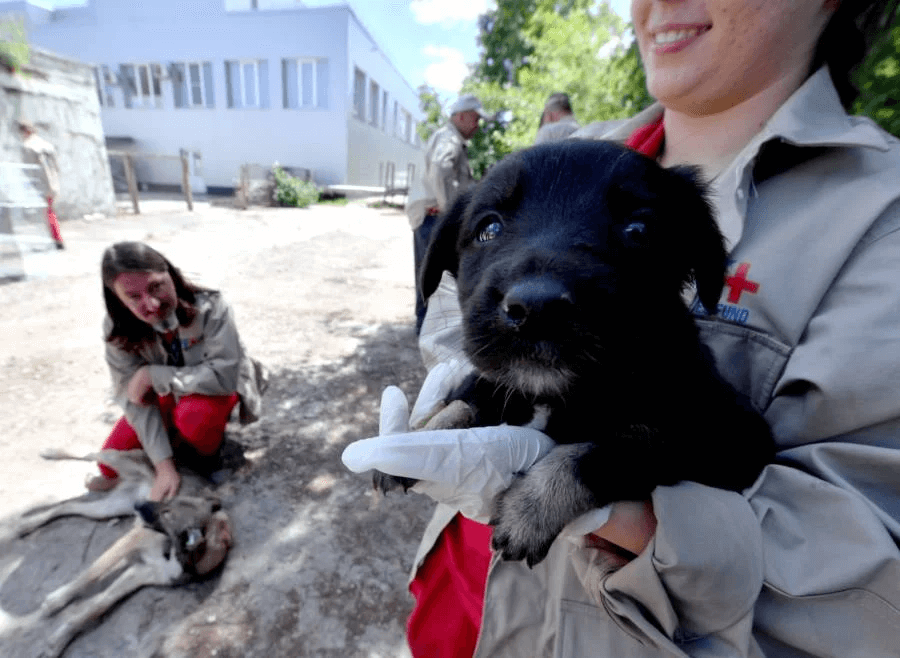Author Jeremiah Josey
The event that is collectively known as “Chernobyl” was little more than a minor industrial accident. However 37 years after the incident it is still labelled as a “catastrophe”. Why is that?

What catastrophe? The only catastrophe of that particular event was other countries sticking their noses into the internal affairs of other sovereign nations. Something that seems to be a daily preoccupation.
Imagine the scene: a phone rings. Someone answers…
Caller – “um, mister USSR person, we have detected radiation at our facility so we’re checking if anything has happened over your way”.
Response – “No. Mind your own business”.
Caller – “Please tell us, we’re scared”.
Response – “Sorry we forgot that you have this insane aversion to a perfectly good source of energy. Yes, one of our power stations blew up. What’s the problem?”.
Caller – “But our cows in Sweden now glow in the dark”.
Response – “Really? Have you checked? Sorry we can’t help your lack of critical thinking. Call me in 37 years and let’s discuss then”.
Caller – “But…”.
‘Click’. Responder hangs up.
There is no call back.

You can now take Chernobyl tours. The wildlife is thriving. Reactors 1, 2 and 3 continued to operate after #4 went offline and they went on to provide enough energy for 2,000,000 homes or about 5,000,000 people.

Based on the work of Harvard, this saved the lives of about 6,000 people every year from the clean air that Chernobyl provided after the incident.
When Reactor 4 imploded and in the cleanup efforts only 31 people perished. In the 37 years since, the collective “we” struggle to find any evidence of trans-national transgressions. Even local ones.

The once famed Chernobyl Tissue Bank, previously housed at the prestigious Imperial College in London and led by former antinuclear but now pronuclear advocate, Professor Geraldine Thomas found nothing. George Monbiot – once a leading Greenpeace member and their biggest anti-nuclear spokesman – interviewed Professor Thomas for a planned hit piece on Chernobyl. Two weeks after the interview – and following getting the Chernobyl data – he dropped out of Greenpeace decrying the obvious fraudulent activities of Greenpeace against nuclear energy. Mr. Monbiot has been a strong pro-nuclear advocate ever since.

Professor Thomas has since stepped aside as head of the Chernobyl Tissue Bank and the think tank has moved from Imperial College, UK to Maryland, USA. It is now under the control of the National Cancer Institute (NCI) – obviously an independent body. Previously the Chernobyl Tissue Bank presented factual studies, data, evidence and its management structure clearly. Now it’s merely a mouthpiece of the Organised Opposition to nuclear power energy with its management hidden behind a series of “committees and panels”.

The Chernobyl “story” as a catastrophe is a farce by any account of reasonable and rational introspection. It is still being milked by the organised opposition to scare people away from secure, reliable Fission energy, because that opposition has so much to lose. Much like the well managed – though media bashed – release of cooling water in Fukushima happening now on the other side of the planet. There is no issue there either.

Here are some real catastrophes still happening every day:
- 8.5 million people perishing every year due to burning of fossil fuels (PM2.5, NOX and CO) Recent Harvard work explains this.
- 8 million people each year from smoking cigarettes (a hazard something known for 100 years. Even women where tricked into smoking in a clever psychological spin using feminism as its leverage).
- 1.35 million people perish each year due to road accidents. Is there a fatal flaw in our society’s makeup – or our minds – to accept that?
- 500 million deaths and incapacitations in total (including IQ loss) from the fossil fuel industry’s saving compound tetraethyllead (TEL). Little tip. TEL is still being used today. Don’t hang around private airfields if you want your kids to grow up smart.

As for industry catastrophes, here are some real ones. No nuclear anywhere.
- Failure of Banqiao Dam and 60 Other Dams, China (1975): An estimated 240,000 deaths.
- Amphitheatre Collapse, Italy (AD 27): Over 20,000 deaths.
- Machchhu Dam Failure, India (1979): 10,000 deaths.
- Bhopal Disaster, India (1984): 500,000 deaths.
- Vajont Dam Disaster, Italy (1963): 1,910 deaths.
- Johnstown Flood, USA (1889): 2,209 deaths.
- Benxihu Colliery Explosion, China (1942): 1,549 deaths.
- Rana Plaza Collapse, Bangladesh (2013): 1,134 deaths.
- Courrières Mine Disaster, France (1906): 1,099 deaths.
- Mitsubishi Hōjō Coal Mine Disaster, Japan (1914): 687 deaths.

The Russian’s-those operating Chernobyl-didn’t think much of sharing the news of losing one of their power plants. Because it frankly wasn’t anybody’s business. They weren’t hiding anything. Even 37 years later we search and search for the numbers to quantify the qualification of “a catastrophe”.

But the search continues in vain. Ironically the same can be said for so-called radiation deaths from the purposeful bombing of Japan by the USA in 1945 using nuclear weapons. Massive fire and heat killed thousands of women and children. But radiation incorrectly takes the blame.

So, fancy a bit of midweek popcorn entertainment. Dial up Chernobyl on HBO and let the fantasy take you away from your real concerns. The ones we seem to want to simply ignore.

For a sobering reminder of the perils of modern human society you can review these lists. Humans learn from mistakes.

Links and References
- Chernobyl Tissue Bank on the Way Back Machine
- https://www.chernobyltissuebank.com/
- https://www.biobasedpress.eu/2018/11/tetraethyl-lead-the-scandal-that-never-erupted/
- https://www.theguardian.com/commentisfree/2018/mar/17/lead-petrol-more-deadly-than-we-thought-brexit-bring-it-back
- Century of Self
- https://www.gov.uk/government/people/geraldine-thomas
- https://en.wikipedia.org/wiki/George_Monbiot
- https://theconversation.com/a-century-of-tragedy-how-the-car-and-gas-industry-knew-about-the-health-risks-of-leaded-fuel-but-sold-it-for-100-years-anyway-173395
- https://www.britannica.com/event/Bhopal-disaster
- https://en.wikipedia.org/wiki/List_of_accidents_and_disasters_by_death_toll
Tags
#Chernobyl #Wildlife #Wolves #Horses #Bears #Buffalo #Przewalski

Comments